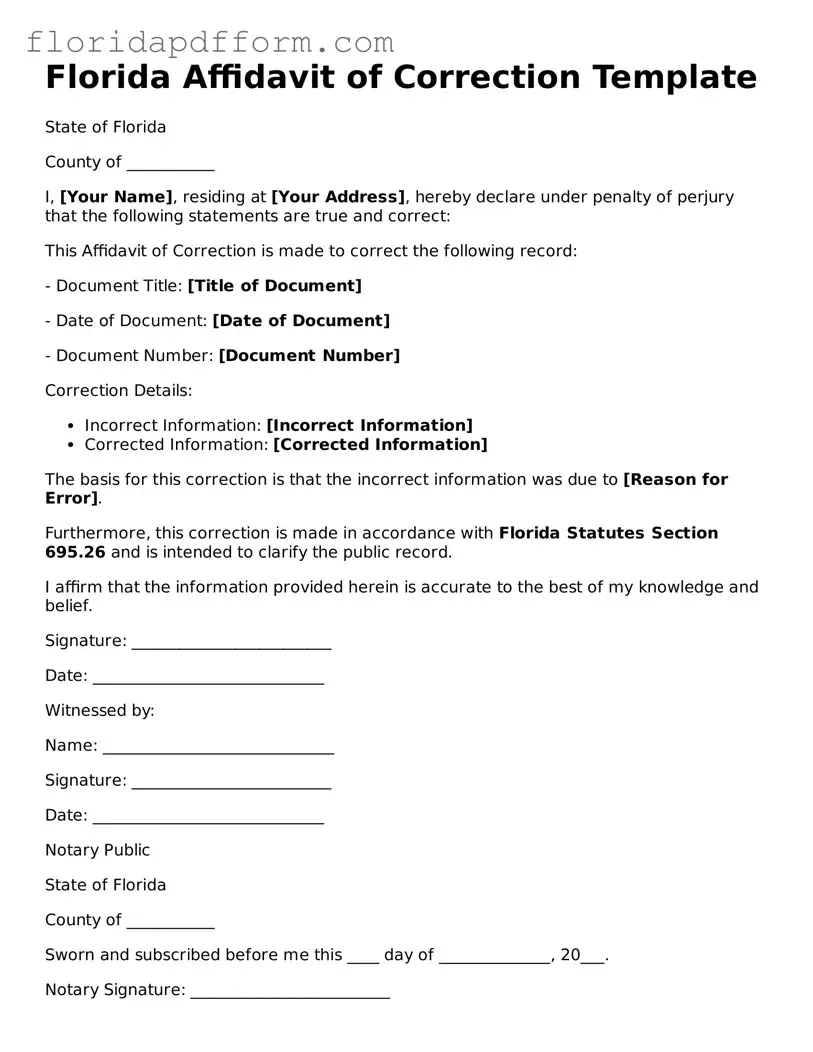Blank Affidavit of Correction Template for Florida
The Florida Affidavit of Correction form serves as a legal document that allows individuals to correct errors in public records. This form is particularly useful for addressing mistakes in documents such as deeds, mortgages, and other official filings. By submitting this affidavit, individuals can ensure that their records accurately reflect their intentions and information.
Launch Editor
